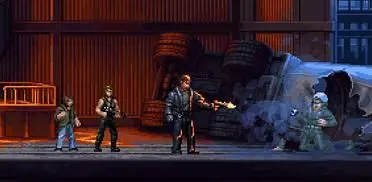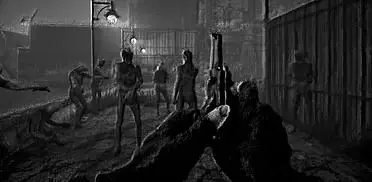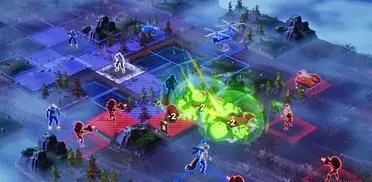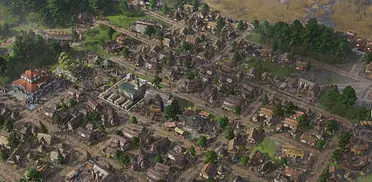A traditional adventure game in terms of its point-and-click machinations, Gray Matter concerns the story of young magician-on-the-run Sam Everett, whom we join as she stumbles on the mysterious 'Dread Hill House' on her way to London. Following a sharply-styled and painterly-animated introduction rife with foreboding atmosphere and mystery, the game begins with Sam tricking her way into the position of assistant for reclusive professor David Styles. Quickly roped into finding six students in Oxford willing to participate in an experiment, she soon settles into her deceitful job and begins a story to discover the dark secrets of the professor, his work, the apparently haunted house and the links between various unexplained events springing up around Oxford.
 |
| The art style can be beautiful at times |
The narrative themes are largely hewn from the rivalry between magical and realist beliefs, and like genre-mate The Longest Journey, the sparring between the two (more directly associated with main characters than Funcom's epic) is the glue that binds the majority of the plot together. There are no aspirations towards any deep musings on the human condition or other such obviously academic underpinnings though, and Sam's quest stays firmly in the light pulp-mystery category from beginning to end. That you get to play as two different people intertwining between present-day chapters and recovered memories provides enough of a draw to keep the storyline ticking away, without - it has to be said - ever becoming particularly engrossing even for the genre.
As far as the nuts and bolts are concerned, Gray Matter will be instantly familiar to anybody even vaguely knowledgable of adventure games in the previous decade. Objects are clicked on and interacted with almost entirely via the left mouse button, which changes to a context sensitive icon dependant on the location and timeline of the plot. Items can be collected and placed into your inventory at the top of the screen, and these in turn can be utilised to solve puzzles or used on key characters to prompt events within the world. There's a logbook, a bunch of save slots and a map screen; and on the whole it's safe, by-the-numbers design. So much so in fact, that at times Gray Matter feels to have stepped out of another era entirely.
 |
| The view from atop Oxford |
What might be a little strange to newcomers is the overall structure however, which is more of a throwback to Jensen's specific product lineage than any other element. Made up of chapters that correspond to the overall timeline within the story, each sequence contains several mini plot quests that can be progressed in a semi-freeform manner. Interacting with one person might drive forward one strand for example, whilst talking to somebody else will advance another. The titles that make up each of these sections are available to view at any moment, along with an individual completion percentage and even a points total for each. Once they have all been progressed to a sufficient degree (most require total completion), characters manifest and events occur that shift the plot forwards into the next chapter or sequence. Usefully, each location on the map is colour-coded as to whether you have any further progression to be made in that area, which is one of precious few concessions to a modern UI.
The problem with such a halfway-house approach to linearity quickly becomes apparent though, as much of Gray Matter can be said to lack clear focus. As the antithesis of a Telltale-esque singular approach, you may find much of your time in Jensen's world is taken up by simply wandering around and clicking on things without many clear goals or leads to progress. Indeed there were several times in which I found myself completely baffled by what I had to do to advance any of the threads, and on most of those occasions the solution came down to simply examining certain nondescript items before a character would mysteriously pop into place in order to continue a conversation. Whilst it can be nice to be left to your own devices and not funnelled down a narrow path all the time, just a little more in the way of subtle guidance (even within the narrative) would have gone a long way to making Gray Matter a more palatable experience in 2011.
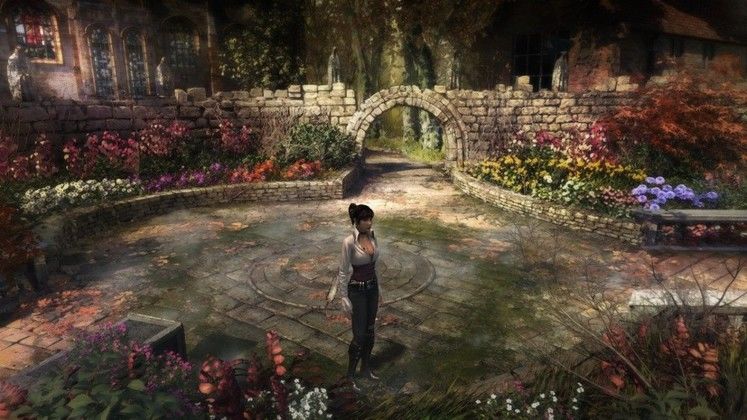 |
| It's all a bit colourful |
The traditional puzzles, as sparse as they are, can certainly be entertaining. Sam's main weapon is her ability to conjure any number of magic tricks dependant on the situation she finds herself in, activating which is a matter of planning out a specific sequence of events involving sleight-of-hand with items from your inventory. You might need to make a phone ring on cue to convince somebody of your prescient abilities for example, which involves setting up a four-stage trick by first placing a hidden cell phone in your left hand, misdirecting your target, manipulating the cell so it calls a payphone, then vanishing the mobile into your sleeve. The interface for these is nicely laid out and fair satisfying to piece together, if altogether far too easy to execute.
GRAY MATTER VERDICT
Therein lies the biggest problem. Despite an engaging plot, interesting characters and some clean and crisp art design (it looks lovely at higher resolutions), the pacing of Gray Matter is just too stop-start to really be able to form a strong bond with the world. The puzzle sequences fly by with ease, whilst the exploration stages drag on far too long due to an almost complete lack of signposting for plot advancement trigger points. When it works, Gray Matter can be an engaging, relaxing experience set in an interesting location with the decent production values shining through in the right areas. When it doesn’t, it’s a pretty tepid screen-hunting slog (despite the ability to turn hotspot labels on with the space bar) that lacks a clear sense of direction. To its credit, the negative doesn’t quite outweigh the positive though, and those of you on the hunt for another modern-day take on the genre may well glean enough from the plot to make it a worthwhile purchase.
TOP GAME MOMENT
Finally figuring out which interaction is needed to advance a sequence
